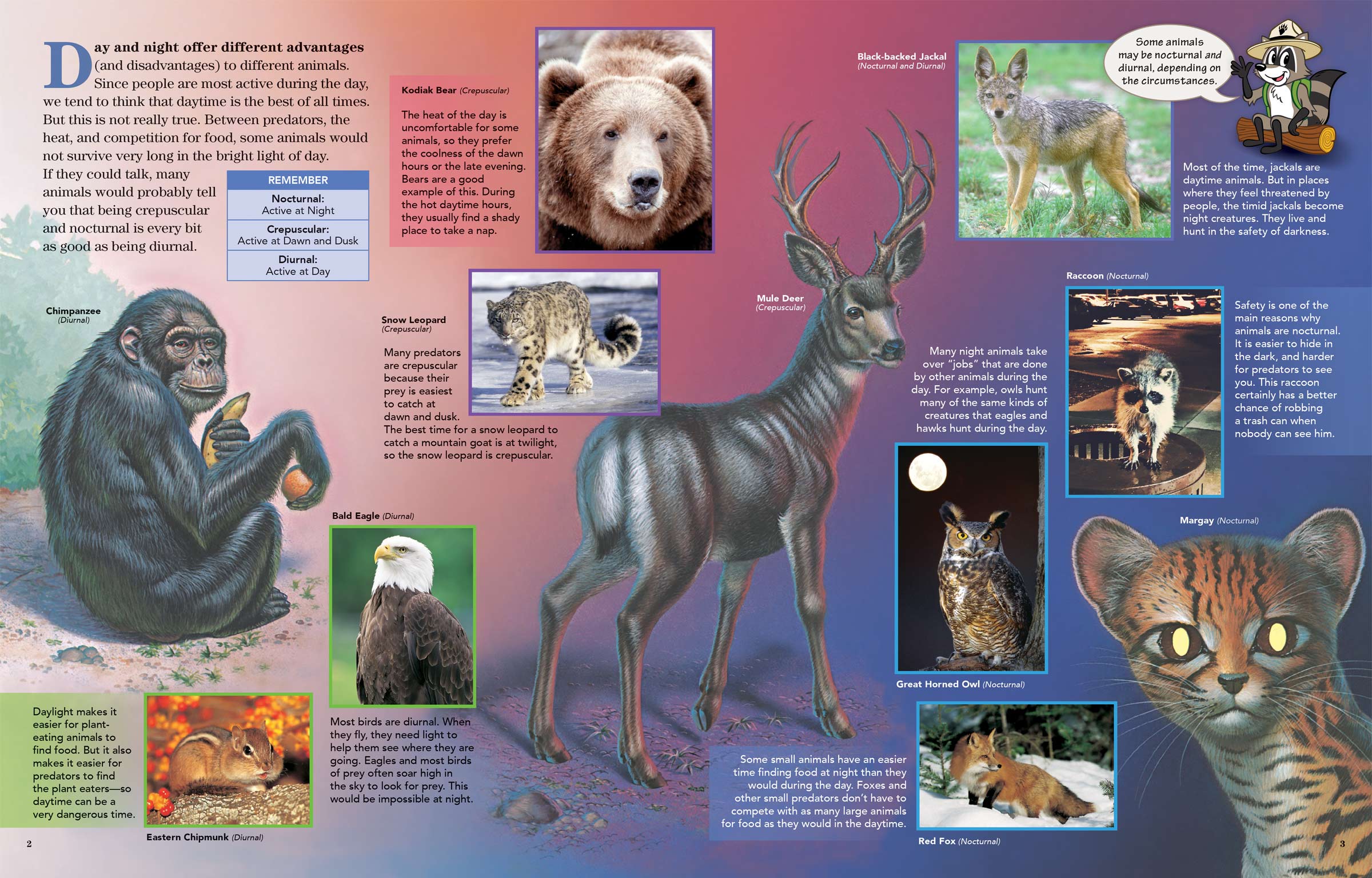
Nighttime or Daytime?
ByDay and night offer different advantages (and disadvantages) to different animals. Since people are most active during the day, we tend to think that daytime is the best of all times. But this is not really true. Between predators, the heat, and competition for food, some animals would not survive very long in the bright light of day. If they could talk, many animals would probably tell you that being crepuscular and nocturnal is every bit as good as being diurnal.
Remember
Nocturnal: Active at Night
Crepuscular: Active at Dawn and Dusk
Diurnal: Active at Day
The heat of the day is uncomfortable for some animals, so they prefer the coolness of the dawn hours or the late evening. Bears are a good example of this. During the hot daytime hours, they usually find a shady place to take a nap.
Many predators are crepuscular because their prey is easiest to catch at dawn and dusk. The best time for a snow leopard to catch a mountain goat is at twilight, so the snow leopard is crepuscular.
Daylight makes it easier for plant-eating animals to find food. But it also makes it easier for predators to find the plant eaters—so daytime can be a very dangerous time.
Most birds are diurnal. When they fly, they need light to help them see where they are going. Eagles and most birds of prey often soar high in the sky to look for prey. This would be impossible at night.
Safety is one of the main reasons why animals are nocturnal. It is easier to hide in the dark, and harder for predators to see you. This raccoon certainly has a better chance of robbing a trash can when nobody can see him. 
Some animals may be nocturnal and diurnal, depending on the circumstances. Most of the time, jackals are daytime animals. But in places where they feel threatened by people, the timid jackals become night creatures. They live and hunt in the safety of darkness.
Many night animals take over “jobs” that are done by other animals during the day. For example, owls hunt many of the same kinds of creatures that eagles and hawks hunt during the day.
Some small animals have an easier time finding food at night than they would during the day. Foxes and other small predators don’t have to compete with as many large animals for food as they would in the daytime.

